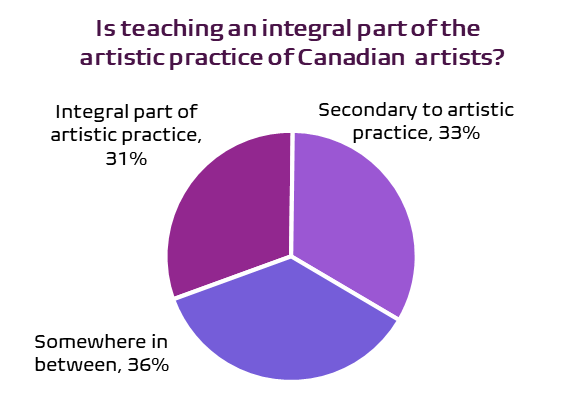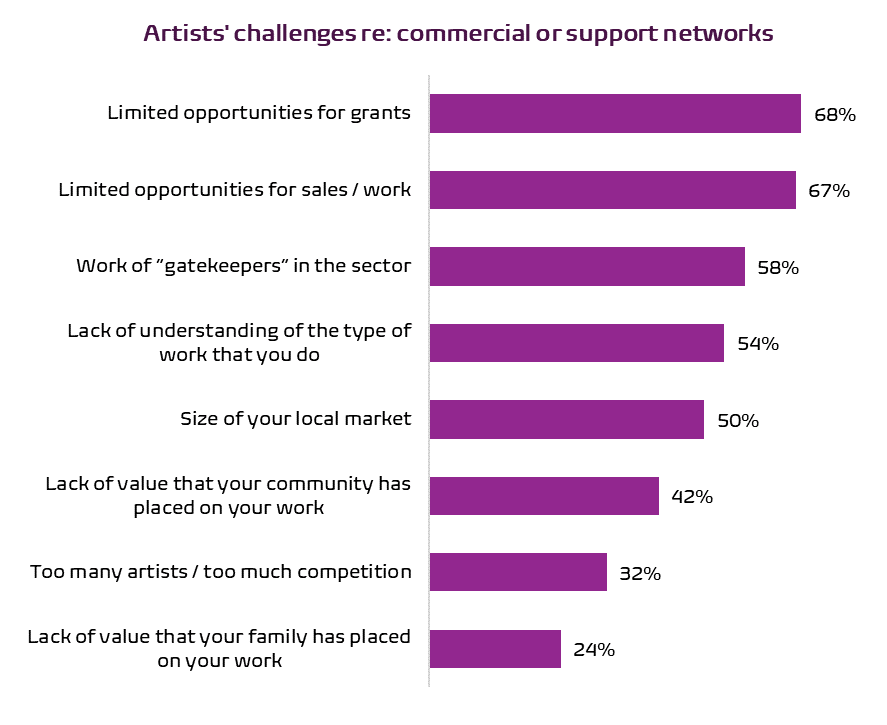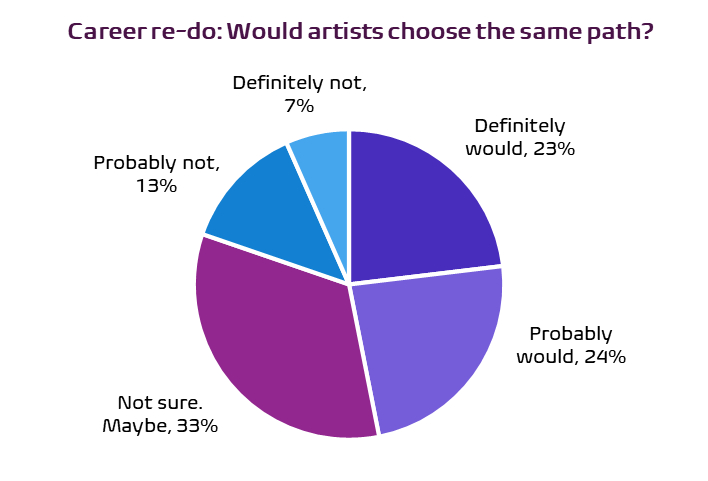How are Canada’s artists doing?
Warning signs of an affordability crisis
Human resources are a very important issue in many sectors of Canadian society, and culture is no different. The current environment provides many significant opportunities and challenges for artists and others who work in the arts, culture, and heritage. However, relatively little is known about the state of cultural human resources in Canada, beyond macro-level statistics from the census and other sources, or anecdotal information about specific people working in the sector.
Sensing a need for more information, in early 2024 the Cultural Human Resources Council (CHRC) commissioned Hill Strategies Research to conduct a survey of affordability and working conditions in the careers of artists and other cultural workers.
The survey received 1,170 responses, including 688 from artists. This summary focuses on responses from artists, who form the core of the cultural sector. In two weeks, we will release a separate report on non-artist cultural workers.
Many more details are available in the full report, which can be accessed here (pdf).
Multiple jobs are common
Most artists are self-employed (51%). Self-employed artists appreciate their work flexibility, freedom, control, and sense of purpose. Most responding artists (54%) work from home, while only about 20% of all Canadian workers do the same.
Nearly three-quarters of artists (71%) have more than one job, and many of their second jobs are within the cultural sector. In fact, 51% of responding artists contribute both their artwork and their second-job effort to the sector.
The survey probed the nature of artists’ second jobs and found that learning new skills is the aspect with which the highest proportion of artists agree (78%). The survey also found that second jobs are common throughout the careers of artists (selected by 77%).
About two-thirds of responding artists (68%) indicated that they enjoy their second position. About one-half (52%) said that they make much more money in their second position than in their main job. Less than one-half said that their second position is high stress (41%).
About two-thirds of responding artists (65%) teach in the arts. Among those who do, there is a nearly even three-way split in terms of how they view their teaching: 31% consider teaching to be an integral part of their artistic practice; 33% consider it to be secondary to their artistic practice, and 36% consider it to be somewhere in between those two extremes.
Low incomes
Incomes are low for many artists. One-half of responding artists (51%) have total personal incomes below $40,000. Regarding incomes from cultural sector sources, two-thirds (66%) earned less than $40,000 in 2023, including 21% who earned less than $10,000.
Warning signs of an affordability crisis among artists
The survey results point to an affordability crisis among artists: financial stress is very common (69%), and only 30% are satisfied with the affordability of their dwelling. Given that more than half work from home, this is a particularly troubling statistic.
In this context, 91% of responding artists did something in 2023 to try to relieve their financial challenges. The most common actions to try to make ends meet were cutting back on expenses (67%) and drawing down savings or investments (53%).
What about equity-deserving artists?
The full report provides key financial indicators by region and for equity-deserving artists. The analysis suggests that financial challenges are particularly acute for IBPOC artists, artists who are D/deaf and/or disabled, gender diverse and women artists, and younger artists. In contrast, the financial situations of other groups of artists are quite similar to the overall averages: LGBTQ2SIA+ artists, official language minority artists, and artists from different regions of the country.
Key supports and challenges
The survey results indicate that a supportive arts community is vital to success as an artist. Two-thirds of responding artists (67%) indicated that support from other artists or cultural workers has been a significant help in their careers.
Artists face many important challenges related to commercial or support networks for their work. Roughly two-thirds of responding artists selected grants and sales as important challenges. These were followed by gatekeeping and lack of understanding of their work.
Artists were asked to select the first challenge that they would change if they had a magic wand. Grants and sales again topped the list:
Limited opportunities for grants (27%)
Limited opportunities for sales / work (20%)
The work of “gatekeepers” in the sector (17%)
The lack of value that your community has placed on your work (13%)
Systemic barriers and mental health challenges
About three-quarters of responding artists (78%) indicated that they have experienced systemic barriers in their careers. Sexism and ageism are most common, but many artists face a variety of other systemic barriers, including challenges related to class, race, mental ability or disability, physical ability or disability, language, and sexual orientation.
Regarding their mental health, almost as many artists are dissatisfied as satisfied. This finding runs counter to Statistics Canada data for all Canadians: more than twice as many Canadians rate their mental health as very good or excellent than fair or poor.
A sign of hope? Of resilience?
Despite all the challenges, about one-half of responding artists would choose roughly the same path if they had the chance to start their careers over again. One-third of artists are on the fence, responding “Not sure. Maybe”. One in every five artists would not choose the same path again. There is a ray of sunshine in the fact that a large majority of responding artists (71%) are satisfied with their principal occupation in the arts and culture.









